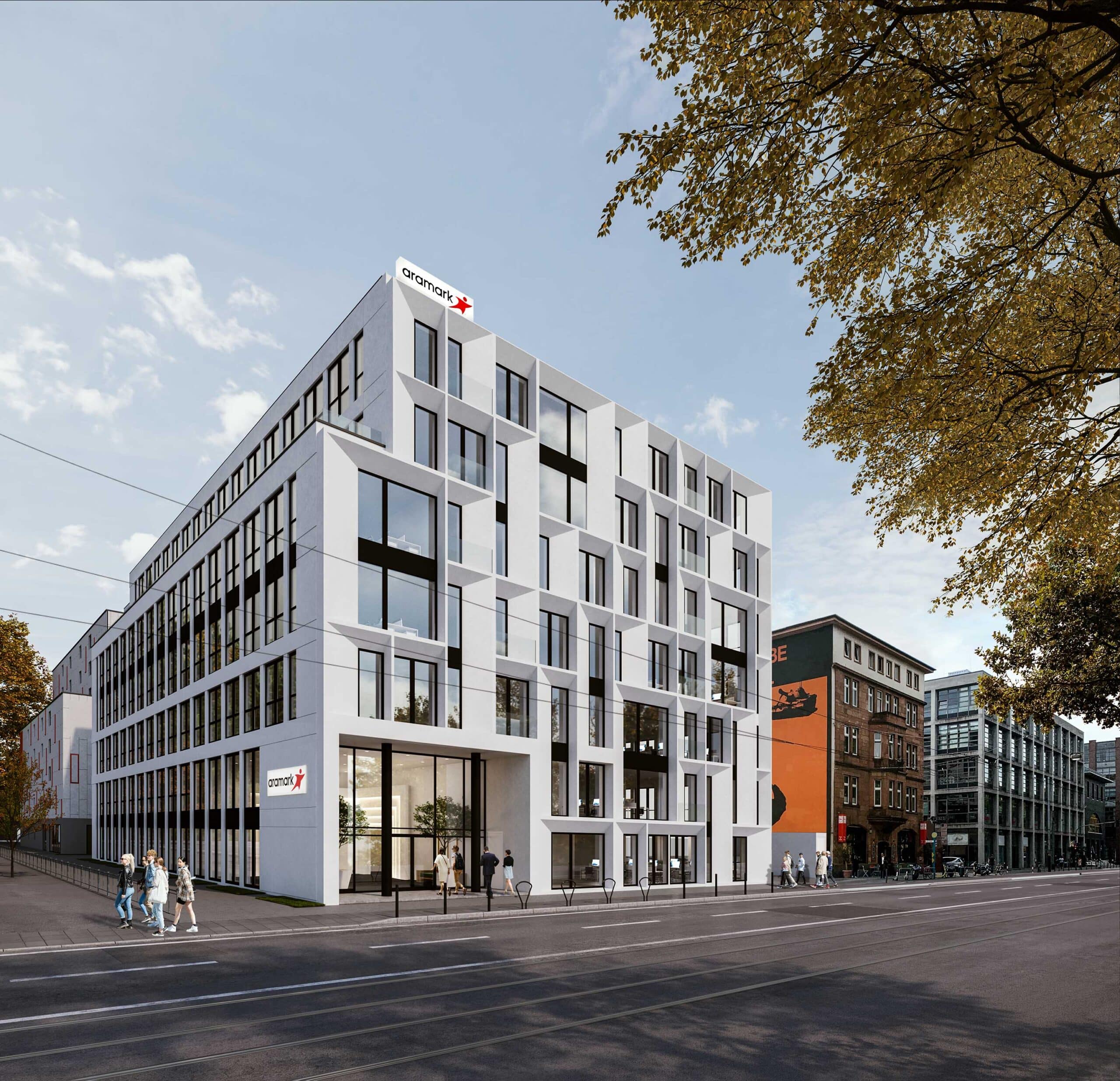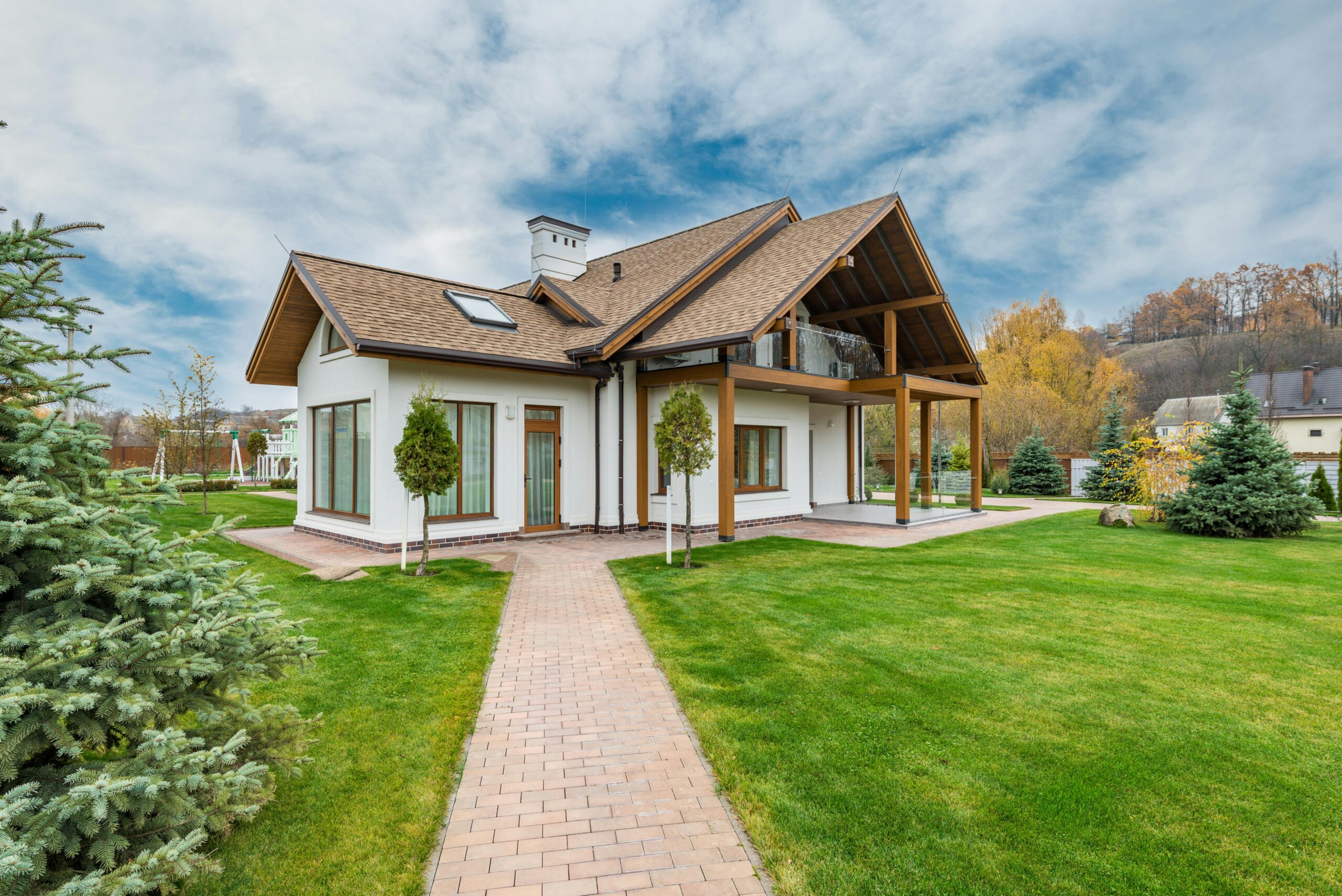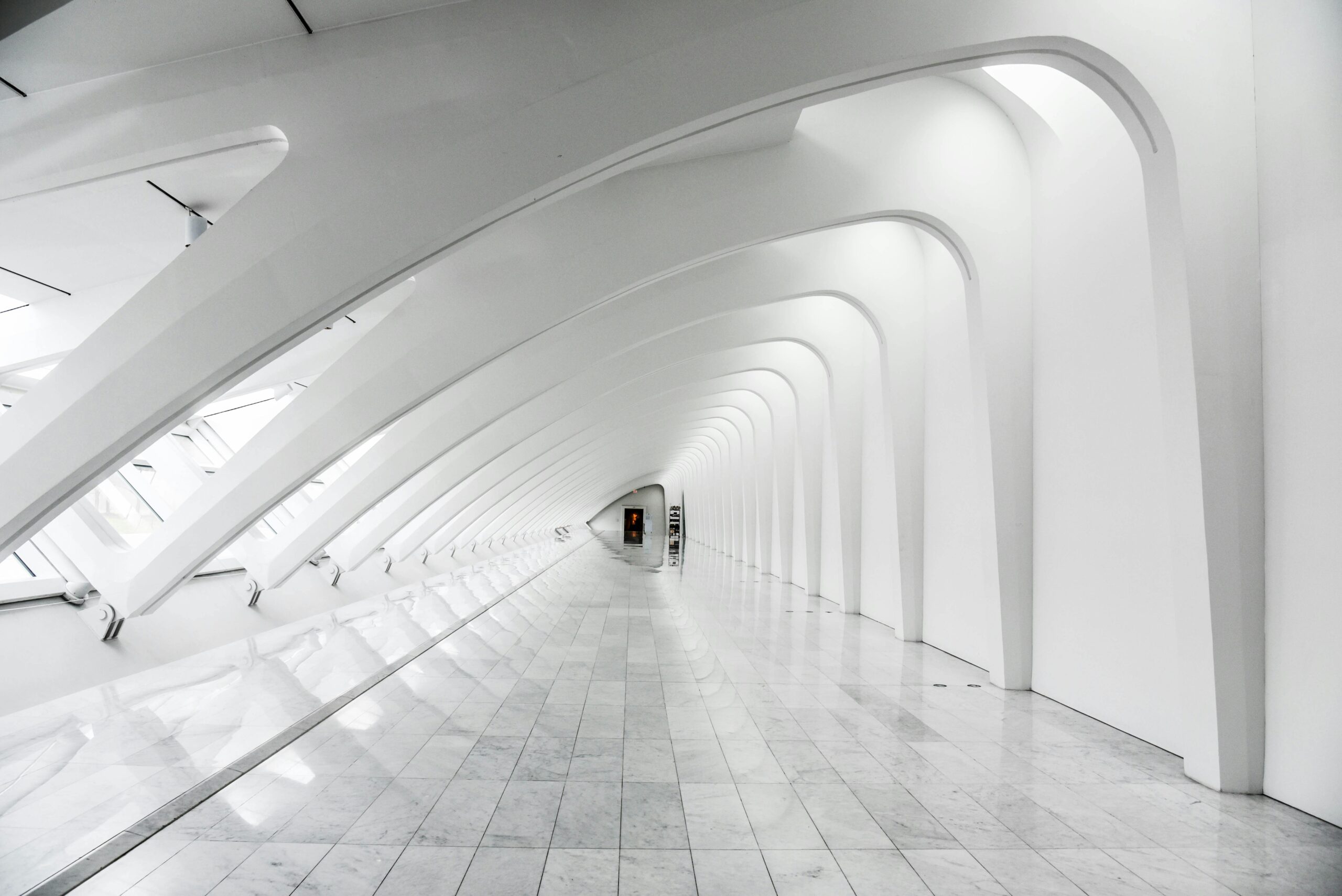Real-time rendering is a unique and advanced technique used in 3D rendering by which architects and designers can present their projects to clients in an interactive way. As we have done 3D renderings from back in 2011, real-time rendering is quite a revolutionary step in the field of architectural renderings which allows us to get the results much faster and test many more possibilities.
This software is used in many latest applications, including virtual reality, medical imaging, online games, architectural designs, graphical representations, and computational models.
In this article, let’s have a look at real-time rendering, the basic principles of this technique, and its uses and significance in modern technology. After conducting detailed research about its current prospects, you can anticipate the future trends and emerging developments of this technology.
What is Real-Time Rendering?

Real-time rendering refers to the process in which you create designs, pictures, and animated videos by computer software and present them within microseconds. You can do these tasks at the rate of interaction, which means the ratio of our design creation with time.
You can generate at least thirty frames, images, or videos in a second. After generating and rendering two-dimensional and three-dimensional figures in real-time, you can use this technique to modify and perform tasks with these images according to our project.
What is its Basic Principle?
To create two-dimensional and three-dimensional graphics and attractively represent them, you have to understand some key principles on which the technique of real-time rendering is based. Let us discuss each of these principles in more detail:
Rendering Pipeline
This is a basic idea about real-time rendering. The process by which you can convert data related to architectural designs from three-dimensional models and sceneries into two-dimensional pictures is known as a rendering pipeline. You can also view these images on screen.
It was a brief description to grasp the basic concept of what a rendering pipeline is. To understand it in depth, you have to go through the stages of this process. Yes! As you move further, you will discover multiple steps in the rendering pipeline, and each one handles a distinct part of the rendering operation.
So, let’s move to these steps:
Geometry Processing
In this procedure, three-dimensional models are converted into a format. The format can be rendered along with the attributes related to these three-dimensional models, such as lighting, position, and orientation. It includes the projection and model-view transformations.
Rasterization
After the geometry processing, where formate was created from three-dimensional models, the next phase of rasterization comes. This phase turns the transformed three-dimensional data or models into a two-dimensional picture which is based on pixels. It translates the visible portions of three-dimensional objects to pixels by analyzing which portion can be seen on the screen.
Shading
Once the portions of three-dimensional objects that can be seen are translated into pixels, they have to pass the shading process. Shading uses physical characteristics and light simulations to figure out the color and appearance of all pixels individually. This phase analyzes the way by which brightness works together with textures and how objects seem when lit.
Texturing
Texturing is the process in which the data about physical properties like colors and designs is added to add surface details, color, and designs to 3D elements by applying 2D pictures, or textures, to them. It can improve the realism of the rendered scenes.
Fragment Processing
Fragments are the individual pixel candidates that are generated during the process of rasterization. To create pixel colors of the highest quality, fragment processing includes some steps like anti-aliasing, alpha testing, and blending.
Frame Buffer
The final pixel colors produced during the stage of fragment processing are stored in a frame buffer. This frame buffer signifies the two-dimensional image that you can see on the screen.
To get the desired visual quality and improve the rendering efficiency, focus on understanding the rendering pipeline. The developers and programmers make alterations in data and add effects at different points in the pipeline. As a result, you are amazed and captivated by the attraction of these designs and images.
Frame Rate and Refresh Rate
- What is the frame rate? The number of separate units or frames that are rendered in a second is called the frame rate. Frame rate is measured and expressed in frames per second, or FPS. In real-time rendering, frame rate regulates the way you can enjoy the animations and communications seamlessly.
- What is the Refresh Rate? It is the frequency at which you can see a new frame on the screen or monitor. The rate of refreshing and updating of data or content on the screen is expressed in Hertz.
There is an interrelation between refresh rate and frame rate. The frame rate of a game or application for rendering visuals should be the same as or multiple of the refresh rate of a display. Animations are displayed fluent and tear-free due to this integration.
Importance
In real-time rendering, the frame rate must be high and steady, particularly for applications and games with interactive features. If the frame rate is higher, the flow of animations will be more fluent, and you will get a more engaging experience. Motion is more fluid, and the experience is more engaging with a higher frame rate. The highest frame rate may be perceived or constrained by the refresh rate of the display.
Rendering Engines
A rendering engine uses different rendering methods and procedures to render and process the graphical data. In real-time applications, this fundamental technology powers the visual elements.
What is it used for, and what/who can benefit from that?

Real-time rendering is a revolutionary technique, and different applications, sectors, and professionals are using it. The most important thing is that it plays a role in producing dynamic, fascinating, and immersive two-dimensional and three-dimensional designs.
Now, let’s explore what real-time rendering is used for and who can profit from this amazing technology.
Applications of Real-Time Rendering
Real-time rendering has found its way into a wide range of applications and industries. Some of these applications are mentioned here with a brief description.
Video Games
The gaming industry is certainly the most popular use of real-time rendering. Video games use this innovative technology to generate immersive and recreational virtual environments with spectacular designs.
Moreover, real-time rendering provides you the ability to explore these complexly rendered worlds and enjoy realistic visuals. When you are fully involved in the virtual environment of a game, you can get a better gaming experience.
Virtual Reality (VR) and Augmented Reality (AR)
The applications of virtual reality and augmented reality are strongly dependent on real-time rendering to make you completely involved in a layout. Augmented reality or AR superimposes the data of the digital world over the physical world. However, when you experience virtual reality or VR, you will completely submerge into the virtual world. Real-time rendering is necessary in these technologies because both AR and VR provide realistic and immersive images and designs.
Architectural Visualization

Do you wonder how you get so many natural and lively designs of a house or building? Is this a magic or a miracle of your computer? Relax! This is neither magic nor a miracle, or maybe, yes, a magic of technology.
Architects and designers use this magic that you call real-time rendering to add life to these architectural designs. We create three-dimensional models, walkthroughs, and interactive presentations to involve both stakeholders and clients. The thorough involvement of viewers is helpful in grasping and analyzing the process of construction.
Medical Imaging
In the field of medicine, real-time rendering has great significance in illustrating and analyzing clinical information. This technology is helpful for professionals working in the healthcare industry, like hospitals, laboratories, and medical colleges.
Physicians, surgeons, radiologists, and researchers use it for radiological investigations like three-dimensional scans, CT scans, and MRI images. The medical reports of these scans aid in diagnosing a disease, disorder, or injury.
After finding out the live view of an ailment, it is easy for health practitioners to plan how to cure it. Students and researchers use radiological examination for medical research purposes.
Automotive Simulations
By using real-time rendering, manufacturers and automotive engineers can simulate the models and designs of cars and vehicles. Besides, they test whether the vehicle is safe to drive or not and the situations during driving. Nowadays, driverless cars are the trend and can travel safely without the risk of accidents. This is all possible due to the technology of real-time rendering.
Film and Animation
You must already have an introduction about the role of animations created by real-time rendering techniques. Besides having scope in architectural movies and animation, it has made its way into the film industry.
Filmmakers use it to preview the sequence of scenes in real time and see intricate visual effects and last-minute changes if required. Furthermore, it solves the complications in the production of film and makes it easy for producers to create a film of high quality with the least expense.
Who Can Benefit from Real-Time Rendering?
Gamers
If you are a video game enthusiast, you can benefit a lot from real-time rendering. When you are playing a video game, its environment seems real and natural. It makes you completely absorbed in its immersive and stunning views.
Architects and Designers
In the field of architecture and interior design, real-time rendering facilitates effective and easier communication among professionals and clients. Designers can present their ideas to clients through dynamic three-dimensional models, images, animations, and videos. It helps them plan their projects more efficiently and increases the chances of their approval.
We work mostly in the real estate market and see that real-time rendering techniques can help to achieve much faster results in shorter timelines. It helps us to shape and form the architectural designs into photorealistic visualizations.
Educators and Researchers
Real-time rendering is a very useful and valuable asset in the fields of research and education. Allowing for the creation of interactive educational content and aiding in scientific visualization. It facilitates the production of interactive instructional materials and supports scientific modeling.
Consumers
Real-time rendering is a part of your common life, and you experience it every day in several ways. The examples are the natural and real-looking visuals and layouts you see while playing video games. Moreover, the applications in your smartphones are also based on augmented reality. All these applications of real-time rendering enhance the quality of entertainment and enjoyment so that you can get better experiences.
Rendering Techniques
Have you ever imagined how real-time rendering creates unique and captivating two-dimensional and three-dimensional designs for you? It is a complicated process and involves various rendering techniques to give a realistic form to your imagination. Let’s discuss each of these techniques in detail:
Rasterization vs. Ray Tracing
Rasterization
The rasterization is a method that is frequently used in creating real-time designs and images. In this technique, the graphics are displayed in a two-dimensional plan in order to transform three-dimensional scenes into two-dimensional images. This technique can analyze the visibility of pixels to create images in no time. In this way, it is very effective and well-suited for real-time applications.
Ray Tracing
Ray tracing is a more advanced rendering technique that portrays how beams of light behave when they bombard various surfaces in a particular scene. It produces real-time photos by precisely modeling complicated lighting effects, reflections, and refractions. You get stunning designs with this technique but can hardly afford it.
Ray tracing has a high computational cost, due to which it is not regarded as historically suitable for real-time rendering. However, recent advancements in hardware, such as dedicated ray-tracing GPUs, have made real-time ray-tracing more accessible.
Shading Models (Phong, Blinn-Phong, PBR)
Shading models control the way light works with components and surfaces in a scene. Multiple levels of realism are produced by different shading models:
Phong Shading Model
Phong shading is a very popular technique and is widely used by designers, developers, and architects. It uses diffuse and reflective components to calculate the reflection of light off a surface. It provides a balance between realism and computational efficiency.
Blinn-Phong Shading Model
Blinn-Phong shading is a variation of the Phong model, or you can say, an improved version of it. By using the Blinn-Phong shading model, you will get a better reflective glow. The developers frequently use this model in producing real-time graphics.
Physically-Based Rendering (PBR)
PBR is an advanced shading model, and it was introduced with the goal of photorealism. If you want to create pure, natural-looking designs by using real-time applications, Physically Based Rendering is a perfect choice. This technique works by simulating the physical properties of materials, especially the property by which they interact with light.
Texture Mapping
Texture mapping is the process by which you can apply two-dimensional images or textures to three-dimensional surfaces to add detail, color, and patterns. Designers use this method to give a more natural touch to three-dimensional objects and make them more realistic. There are different tools that are used to complete different components of a design.
Diffuse maps specify the fundamental color of an object in a design. Other than diffuse maps, there are normal maps that control the way light interacts with an object in order to stimulate the features of a surface.
The color and intensity of specular highlights are also the important part of a design. Specular maps are responsible for controlling this aspect. Then come bump maps that mimic the imperfections in the surface. In this way, they create the illusion of depth without disturbing the geometry of your design.
Shadows and Lighting
Shadows and lighting are essential for creating realistic and immersive scenes.
Shadow Mapping
This technique simulates shadows by rendering a depth map from the perspective of the light source. It determines which parts of the scene are in shadow.
Global Illumination
Techniques like radiosity and photon mapping bounce lighting rays off the surface to create soft, realistic shadows and ambient lighting.
Point Lights, Spotlights, and Directional Lights
You can get varying effects of lighting through different sources of light. These effects range from point lights for localized illumination to directional lights for simulating sunlight.
Anti-Aliasing
You can use the technique of anti-aliasing to lessen the jagged or staircase look in the pictures displayed, particularly the curved or diagonal edges. It smooths out jagged lines and improves the quality of the image in the following way.
Super-Sampling Anti-Aliasing (SSAA)
The super sample anti-aliasing technique renders the scene at a higher resolution and then downsamples it to reduce aliasing.
Multi-Sampling Anti-Aliasing (MSAA)
The technique of multi-sampling anti-aliasing or MSAA is used to sample multiple points within each pixel in order to identify edges and smooth them out.
Temporal Anti-Aliasing (TAA)
In this method, you can use the information from previous frames to reduce temporal aliasing, which occurs during motion.
Future Trends in Real-Time Rendering
As time passes, there will be an increase in the demand for more exciting and lively environments in the virtual world. The technology that is advancing day by day will drive more traffic toward real-time rendering by creating more attention-seeking activities for them. Here are some of the key future trends in real-time rendering:
Ray Tracing Advancements
With the improvement in the efficiency and capability of hardware, the ray tracing technique in real-time rendering is becoming common. In fact, ray tracing is at the forefront of advancement in real-time rendering. The photorealistic rendering will have more accurate reflection, shadows, and global illumination.
Realistic AI-Driven Environments
Nowadays, with the development of new ideas, the trends in AI-driven technology are being integrated into real-time rendering. These trends play a role in creating more dynamic and natural-looking environments for you. The algorithms that employ machine learning can generate realistic textures, animations, and procedural content for you. As a result, it reduces the requirement for the development of manpower.
Cloud-Based Rendering
Cloud-based rendering services are gaining popularity day by day. By using this technology, you can offload rendering tasks to remote servers with powerful GPUs. This makes it possible for you to use real-time rendering on devices that have less processing capability, such as smartphones and tablets.
Real-Time Global Illumination
Global Illumination (GI) is a rendering technique that simulates the indirect lighting in a scene. As a result, you get more realistic and natural lighting effects. One of the miracles of real-time rendering is that this technique is developing real-time solutions for global illumination.
It not only develops the GI solutions but also optimizes them to run efficiently on your hardware. Due to this innovation, you can enjoy realistic and dynamic lighting in games and other virtual environments.
Key Takeaways
Real-time rendering helps you to present your project more interactively and effectively. By using the technique of real-time rendering, you can create designs, images, and animated videos in microseconds.
Today, real-time rendering is pushing the boundaries in terms of visual quality, interactivity, and realism. Due to the development and innovation in real-time rendering techniques, you are going to get more involved in the virtual world in the future.
FAQs
- What is real-time rendering?
Real-time rendering is a unique and advanced technique used in 3D rendering by which architects and designers can create more realistic images and present their projects to clients in an interactive way.
- What are the methods of real-time rendering?
Real-time rendering is a complicated process and involves various rendering techniques to give a realistic form to your imagination. Basically, the techniques like rasterization and ray tracing are used in this rendering. Some other techniques are shedding models, texture mapping, shadows, and lighting.







